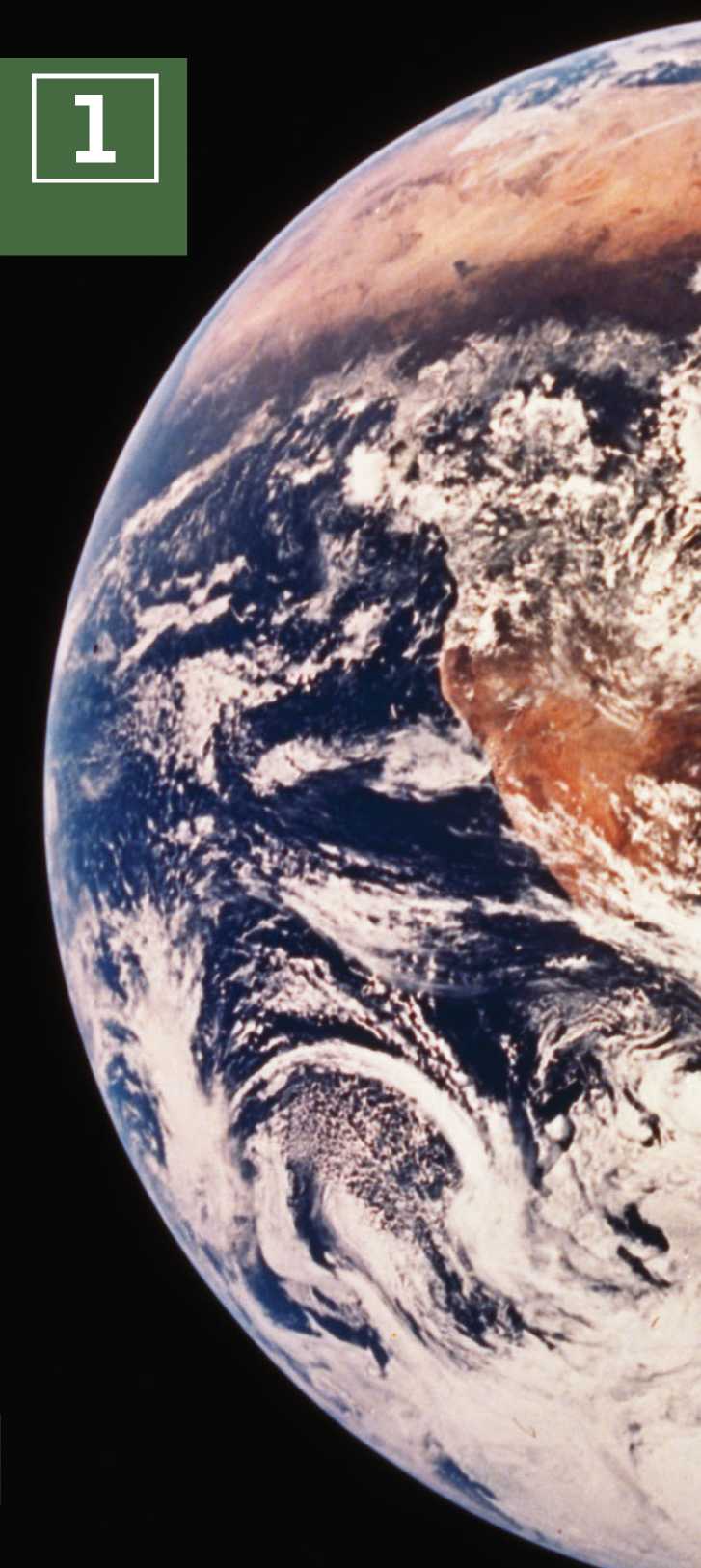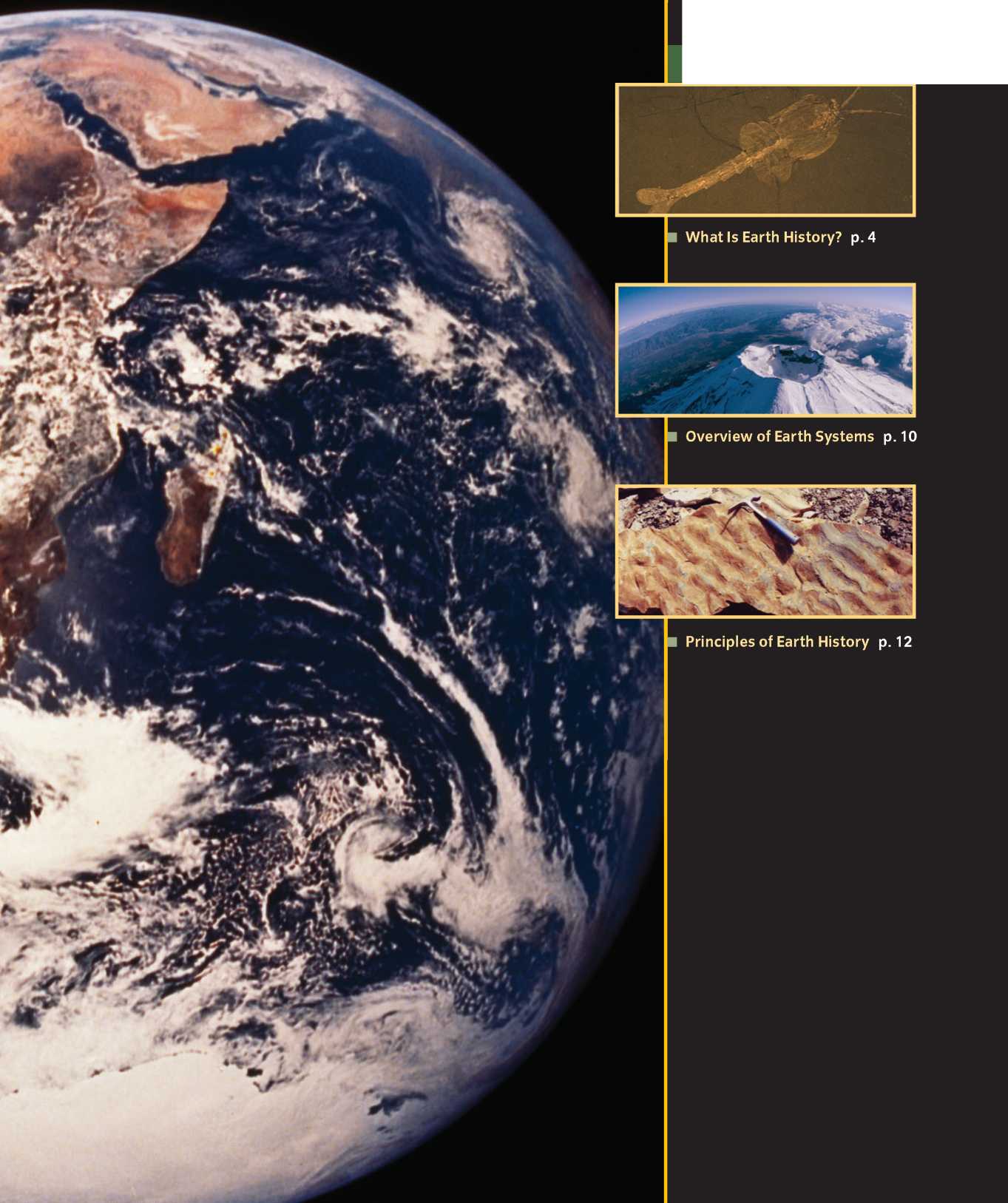Irom outer space, Earth appears as a surprisingly fragile bluish, mostly water-Icovered sphere blanketed by a thin, delicate, gaseous layer. Beneath this veneer, though, lies the record of an amazingly dynamic history recorded in rocks you walk over daily.
As you read on, you will learn how to interpret Earth’s history. You will go on a remarkable journey—a trip through Earth’s 4.5 billion-year development, during which you will encounter evidence of this planet’s often violent growing pains. You will witness the evidence for dramatic changes in this planet’s land and sea relationships, mountain ranges, river systems, glaciers, and life forms. As you journey through Earth’s history, you will begin to appreciate the interaction among the processes—physical, chemical, and biologic— that work to shape Earth’s surface.
You will learn techniques and tools used to interpret Earth’s development and will discover the critical role of the natural sciences in modern civilization. Many things you depend on every day have a deep antiquity, and geologists play a central role in the exploration and production of their raw materials. Gasoline, electricity, plastics, cosmetics, steel, glass, concrete, fertilizer, and food additives are all derivative of such raw Earth materials as oil, coal, asphalt, iron, silica, limestone, phosphate, and water.
As we try to predict what the future holds for our planet, our best source of guidance is the longterm record of change locked in Earth’s stratigraphic layers.

CHAPTER OUTLINE





 World History
World History









